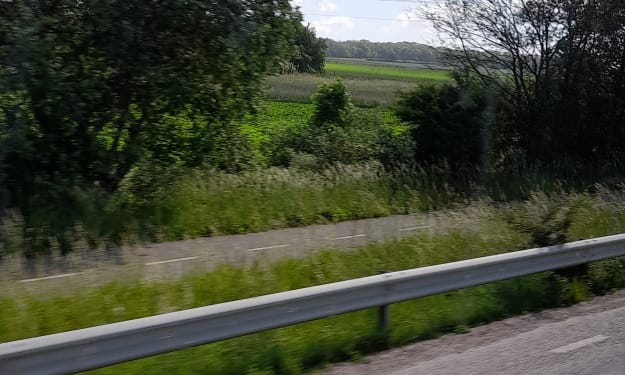The link between owl remains and searching for history
digging history

Have you ever wondered what the environment and wildlife was like centuries ago? By studying the contents of owl pellets, scientists are able to look back in time and gain insight into the past. Dr. McDowell, an ecologist at The University of Tasmania, has been collecting owl pellets for 150,000 years on Kangaroo Island and using them to learn about species diversity and how it has changed over time.
By examining the bones in the pellets, Dr. McDowell can determine what types of animals were living in the region at different points in history and how their populations may have changed due to climate change, human interference, or other environmental factors. She has found that these deposits contain a variety of small mammals such as rodents, bats, and marsupials that would typically not be found in the area today. This information can be used to help manage conservation efforts and predict what animal species may be living in a given region in the future.
Additionally, Dr. McDowell has encountered some challenges in her work, particularly when advocating for rodent species which are not usually seen as “charismatic” species. She hopes that by emphasizing the important role that these animals play in their ecosystems—including caching seeds and shifting fungal spores—people may come to appreciate them more.
Overall, Dr. McDowell’s work has enabled her to gain valuable insight into the ancient environment and species of Kangaroo Island, as well as the potential impacts of climate change on wildlife populations. By studying the contents of owl pellets, scientists around the world can take an in-depth look into the past and better prepare for the future.
By studying the contents of owl pellets, scientists can also gain insight into the geographical distribution of species. For example, some animals can move with climate and habitat envelopes—which is when a particular combination of plants, temperature, soil, and other factors create an environment suitable for certain species. As climate changes, these animals may move as well which could impact the overall biodiversity in an area.
Furthermore, Dr. McDowell’s research has highlighted the importance of preserving biodiversity in an ecosystem. By studying the pellets, she has been able to identify species that have become locally extinct due to human activity or climate change. These findings demonstrate how naturally occurring populations and communities can be disrupted by human intervention. To maintain a healthy ecosystem, conservationists must recognize the impact humans have on wildlife and prioritize species protection.
By examining the bones found in owl pellets, scientists can also gain insight into the role of animals in their ecosystems. For example, some species have a symbiotic relationship with plants and fungi which can help to regulate water availability and nutrient cycling. By digging up the soil around plants, these animals provide an ideal environment for seed germination and contribute to overall plant health. Additionally, these animals are important in dispersing fungal spores which can help to improve soil fertility and stability.
Overall, Dr. McDowell’s research has provided insight into the environment and wildlife of Kangaroo Island centuries ago, as well as the potential impacts of climate change on animal populations. By studying the contents of owl pellets, scientists are able to gain valuable insight into species diversity and distribution around the world
and how they interact with their environment. This information can be used to inform conservation efforts and ensure the protection of endangered species. Ultimately, this research highlights the importance of preserving biodiversity in an ecosystem for the benefit of all living organisms.
Dr. McDowell’s research also highlights the importance of maintaining a healthy and balanced ecosystem. By studying the contents of owl pellets, she has been able to identify species that have become locally extinct due to human activity or climate change. This illustrates how human intervention can potentially disrupt natural populations and communities. Additionally, these animals play an important role in soil health, dispersing fungal spores and helping to regulate water availability. To maintain a healthy ecosystem, conservationists must prioritize species protection and recognize the impacts of climate change on wildlife populations.
Dr. McDowell’s research has also identified the role of animals in soil health and fertility. By digging up the soil around plants, these animals can provide an ideal environment for seed germination and help to improve overall plant health. Additionally, they are important in dispersing fungal spores which aid in nutrient cycling and water availability. This symbiotic relationship between species is essential for maintaining a healthy and balanced ecosystem.
Overall, Dr. McDowell’s research has provided valuable insight into species diversity, distribution and the impacts of human intervention on wildlife populations. Additionally, she has highlighted the importance of preserving biodiversity in an ecosystem for the benefit of all living organisms. By studying the contents of owl pellets, scientists are able to gain greater understanding of how animals interact with their environment and use this information to inform conservation efforts.
Dr. McDowell’s research has also shed light on the importance of preserving biodiversity in an ecosystem. By examining the bones found in owl pellets, she has been able to identify species that have become locally extinct due to human activity or climate change. These findings demonstrate how naturally occurring populations and communities can be disrupted by human intervention, making it necessary for conservationists to prioritize species protection.
Dr. McDowell's research has also highlighted the importance of animals in soil health and fertility. By digging up the soil around plants, these animals are able to improve water retention and aeration, which encourages seed germination and contributes to overall plant health. Additionally, these animals help to disperse fungal spores which aid in nutrient cycling and can help make soils more resistant to erosion and extreme weather events. This symbiotic relationship between species is essential for maintaining a healthy and balanced ecosystem.
Overall, Dr. McDowell’s research has provided insight into the environment and wildlife of Kangaroo Island centuries ago, as well as the potential impacts of climate change on animal populations. By studying the contents of owl pellets, scientists are able to gain valuable insight into species diversity and distribution around the world. Additionally, her research has highlighted the importance of preserving biodiversity in an ecosystem for the benefit of all living organisms and how animals can contribute to soil health and fertility.
Dr. McDowell’s research has also revealed the importance of considering animal behavior when managing an ecosystem. By examining the bones found in owl pellets, she has been able to observe how animals interact with their environment and use this information to inform conservation efforts. For instance, she has identified that digging can be beneficial for soil health by dispersing fungal spores and improving water retention and aer ation. This symbiotic relationship between species is essential for maintaining a healthy and balanced ecosystem, and conservationists need to keep this in mind when protecting animals from human intervention or climate change.
Dr. McDowell’s research has provided valuable insight into the way animals interact with their environment and how this affects conservation efforts. By studying the contents of owl pellets, she has been able to observe how different species coexist and the impact that human intervention has on wildlife populations. Additionally, her findings have shed light on the benefits of ecological interactions between species, such as nutrient cycling and improved soil aeration, and how this can be used to inform conservation efforts. Ultimately, Dr. McDowell’s research has highlighted the need to prioritize species protection in order to maintain a healthy and balanced ecosystem that is resilient to human intervention and climate change.
Dr. McDowell's research has also revealed the potential consequences of climate change on animal populations. Animals are more susceptible to extreme weather events and an altered environment, which can drastically reduce their ability to survive and thrive in their habitat. In many cases, this can lead to displacement or extinction due to an inability to adapt quickly enough. It is therefore essential for conservationists to consider the ecological dynamics of an environment when making decisions about species protection in order to ensure that wildlife can survive and thrive in its natural habitat.
Dr. McDowell’s research has also provided insight into the importance of considering animal behavior when managing an ecosystem. By examining the bones found in owl pellets, it is possible to gain valuable insight into how different species interact with their environment and how this can be used to inform conservation efforts. For instance, by digging up the soil around plants, animals are able to improve water retention and aeration, which can encourage seed germination and lead to better overall plant health. This symbiotic relationship between species is essential for maintaining a healthy and balanced ecosystem, and conservationists need to keep this in mind when managing an environment or protecting animals from human intervention or climate change.
Dr. McDowell’s research has also shown the importance of understanding how different species can interact in an environment to create a diverse, balanced ecosystem. For instance, many animals play an important role in nutrient cycling. By dispersing fungal spores through their natural digging behavior, these species help improve soil aeration and water retention, allowing plants to better absorb essential nutrients from the ground . Additionally, these animals can help spread the seeds of other plants, allowing more species to thrive in an area and promoting greater biodiversity. Ultimately, Dr. McDowell’s research has highlighted the importance of considering animal behavior when managing an ecosystem in order to ensure that all species are able to coexist and thrive in their environment.
By examining the bones found in owl pellets, Dr. McDowell has also been able to gain insight into the potential effects of climate change on animal populations. Animals are particularly vulnerable to changes in temperature, moisture levels, and other environmental factors that can drastically alter their behavior and ability to survive. In some cases, this may lead to displacement or extinction as species are unable to adapt quickly enough. It is therefore essential that conservationists consider the ecological dynamics of an environment when making decisions about species protection in order to ensure that wildlife can thrive in their habitat.
Dr. McDowell’s research has also highlighted the importance of maintaining a healthy and diverse ecosystem in order to protect wildlife from climate change and human intervention. By digging up the soil around plants, animals can provide essential nutrients to help these species grow and survive in their habitat. Additionally, they can aid in the dispersal of fungal spores, which helps improve water retention and soil aer ation. Finally, they can spread the seeds of other plants, promoting greater biodiversity and allowing more species to thrive in an area. Through her research, Dr. McDowell has demonstrated the importance of considering animal behavior when managing an ecosystem in order to ensure that all species are able to coexist and thrive in their environment.
Dr. McDowell’s research has also presented new insights into the ways in which different species interact with their environment, and how this can be used to inform conservation efforts. In many cases, animals provide an invaluable service to their ecosystem by helping to disperse fungal spores and nutrient-rich soil around plants. This helps to improve water retention and increases oxygen levels, providing a better environment for seed germination and overall plant health. Additionally, animals can help spread the seeds of other plants, creating greater biodiversity and allowing more species to thrive in an area. Ultimately, Dr. McDowell’s research has demonstrated the importance of considering animal behavior when managing an ecosystem in order to ensure that all species are able to coexist and thrive in their environment.
About the Creator
Enjoyed the story? Support the Creator.
Subscribe for free to receive all their stories in your feed. You could also pledge your support or give them a one-off tip, letting them know you appreciate their work.





Comments
There are no comments for this story
Be the first to respond and start the conversation.